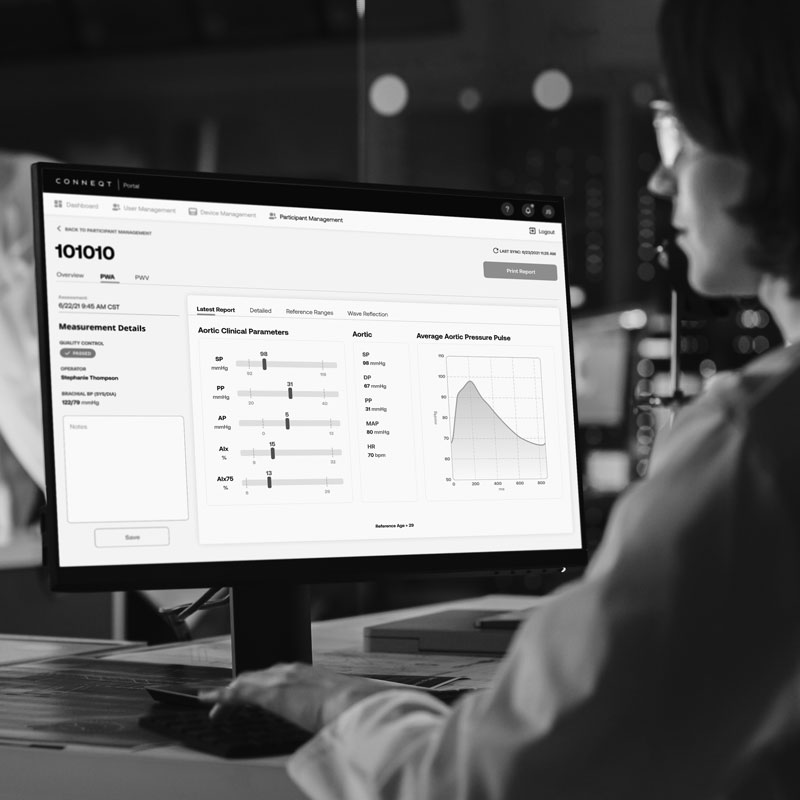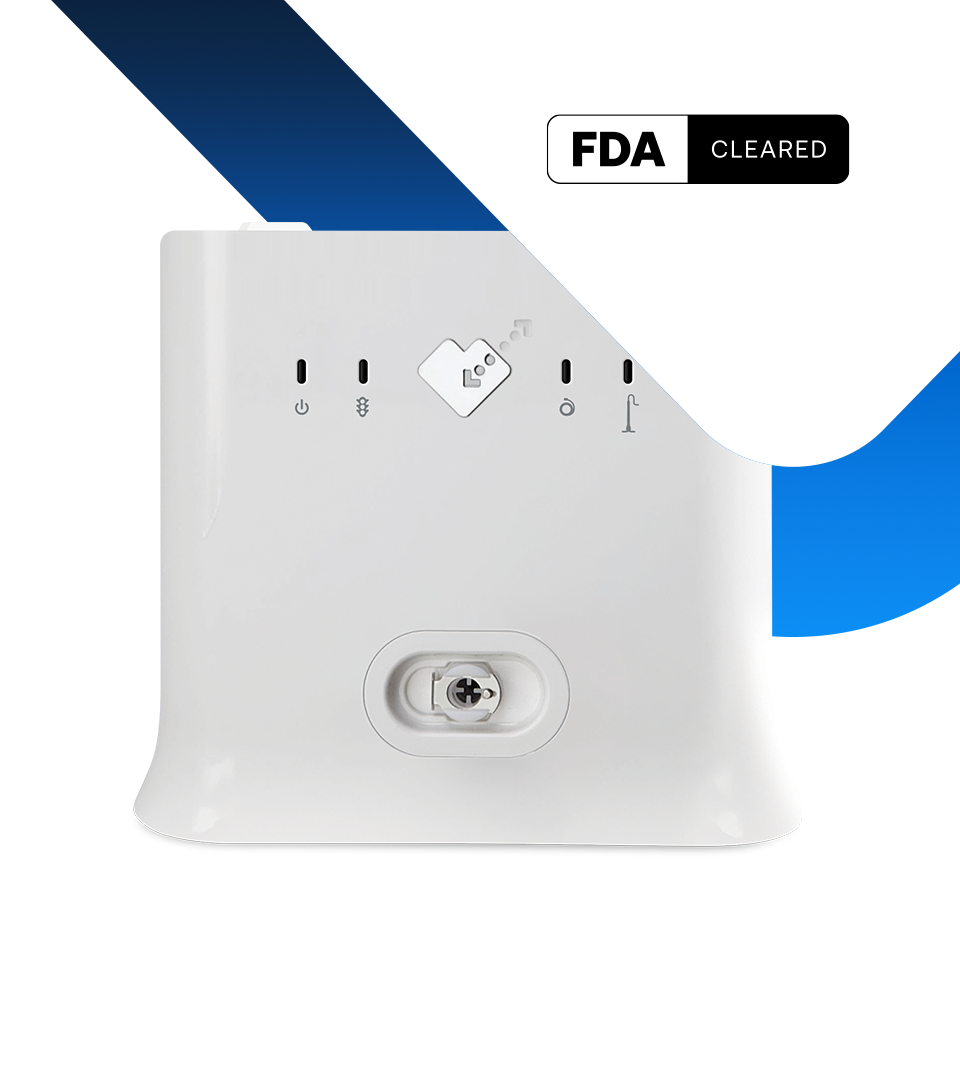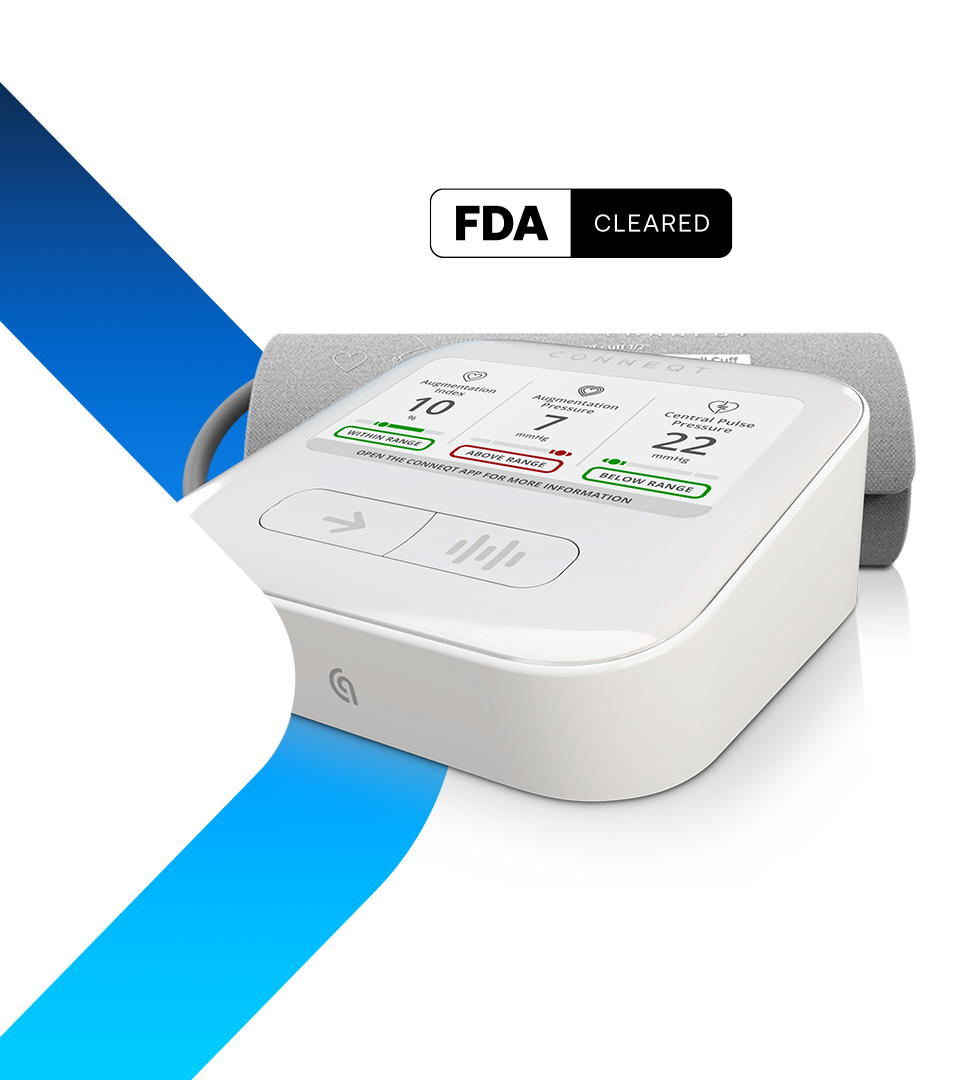Academia/Research
Shaping Tomorrow's Advancements with Vascular Biomarkers

Discover Novel Insights and Breakthroughs
Vascular biomarkers are crucial in academic research, providing broad utility across disciplines. They enhance understanding of cardiovascular disease mechanisms, support early diagnosis and prognosis, and aid in developing more effective diagnostic tools and therapies. In population studies and epidemiology, these biomarkers identify trends and risk factors, effectively bridging basic research and clinical practice to transform patient care.
Vascular Biomarkers Explained
Clinical Trial & Research Partners




























40 Years
Founded on 40 years of hemodynamics studies, Validated by 20+ years of research.
2,400+
The SphygmoCor technology has been independently validated by researchers worldwide and supported studies that resulted in over 2,400+ peer-reviewed publications.
SphygmoCor® Technology
Our pioneering technology was enabled by more than 40 years of hemodynamic studies of the cardiovascular system and set the foundation for noninvasive measurement of vascular biomarkers including central aortic pressures and arterial stiffness indices.
Clinical Investigations


Real World Insights
CONNEQT Pulse significantly streamlines data collection, enabling frequent and real-time capture of physiological and vascular biomarker data in remote and home environments. This device eliminates the need for participants to visit research sites, simplifying logistics and enhancing engagement. By facilitating regular data collection across a wide geographic area, CONNEQT Pulse not only improves study quality but also broadens the scope of research possibilities in everyday settings.
Around-the-Clock Data
Oscar 2 stands out as a top ambulatory monitor, continuously capturing vascular biomarkers over 24 hours in non-clinical environments. By tracking blood pressure dynamics and arterial health in real-world settings, it significantly boosts the reliability of vascular biomarker evaluations. This enhanced accuracy accelerates the discovery of new insights, as it supplies researchers with more relevant data from everyday conditions.

